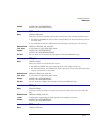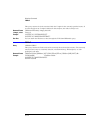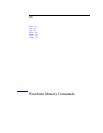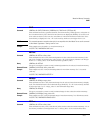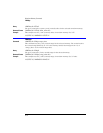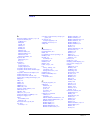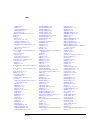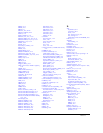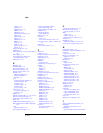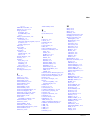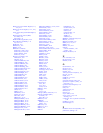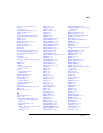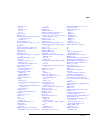
Index-9
Index
SOURce?, 17-8
X1, 17-8
XDELta, 17-9
Y1, 17-9
Y2, 17-9
SCALe?, 18-18
SCOLor, 11-7
SCPI (standard commands for program-
mable instruments)
standard, 1-2
screen captures, 10-7
SCReen HARDcopy AREA, 6-5, 15-6,
17-11
SDONe?, 7-9
segments of sample programs, 2-2
selected device clear (SDC), 1-35
self test, 3-14
semicolon, 1-23
SENDvalid, 18-31
sequential and overlapped commands,
1-25
SERial (SERial number), 4-13
serial poll
(SPOLL) in example, 1-16
disabling, 1-35
of the Status Byte Register, 1-16
serial prefix, reading, 3-4
Service Request
code and capability, 1-35
sample program, 2-11
Service Request Enable
(*SRE), 3-12
Register (SRE), 1-16
Register Bits, 3-12
Register default, 1-34
setting
data rates, 9-2
Service Request Enable Register bits,
1-16
Standard Event Status Enable Regis-
ter bits, 1-19
time and date, 5-7
TRG bit, 1-16
voltage and time markers, 16-2
setting up
service request, 2-13
SETup, 5-7
setup
recall, 3-7
storing, 10-9
short form commands, 1-23
signal present
conditions, 9-2
status, 9-9
Signal Processing Commands, 20-2
LFEqualizer, 20-2, 20-3, 20-4, 20-5,
20-6
SIMage, 10-7
SINGle, 4-13
SKEW AUTO, 7-10
SKEW, in CALibrate command, 7-9
software version, reading, 3-4
SOURce, 14-4, 15-4, 17-10, 18-10, 18-32
and measurements, 18-3
SOURce?, 17-8
SPOLL example, 1-16
SPResent?, 9-9
*SRE (Service Request Enable), 3-12
SRE (Service Request Enable Regis-
ter), 1-16
SSAVer, 11-9
SSCReen, 6-4
, 15-5, 17-10
SSCReen AREA, 6-5
SSCReen IMAGe, 6-6
SSUMmary, 15-7, 17-12
Standard Event Status Enable Register
(SESER), 1-19
bits, 3-3
default, 1-34
Standard Event Status Register (ESR),
1-18
bits, 3-4
Standard Status Data Structure Model,
1-11
STARt, 7-4–7-5, 17-12
STATe, 16-3, 17-6
status
registers, 3-2
Status Byte (*STB), 3-13
Status Byte Register, 1-11–1-16
and serial polling, 1-16
bits, 3-13
default, 1-34
status reporting, 1-11
bit definitions, 1-17
decision chart, 1-12
STATus, in CALibrate command, 7-10
STATus?, 7-4, 7-7
*STB (Status Byte), 3-13
STDDev?, 18-19
STIMulus, 21-10
STOP, 4-13
storage and retrieval, 10-2
STORe,
10-9
SETup, 4-13
WAVEform, 4-14
storing waveform, sample program,
2-11
suffix
multipliers, 1-25
summary bits, 1-11
SWAVeform, 6-6, 15-8, 17-13
SWAVeform RESet, 6-7, 15-9, 17-13
syntax error, 1-46
System Commands, 5-2
DATE, 5-2
DSP, 5-2
ERRor?, 5-3
HEADer, 5-4
LONGform, 5-5
MODE, 5-6
SETup, 5-7
TIME, 5-7
system controller, 1-35
SYSTem SETup and *LRN, 3-5
T
talker
code and capability, 1-35
unaddressing, 1-35
TDR Commands, 19-2, 21-2, 22-2
TDRSkew, 8-6
TEDGe, in MEASure command, 18-32
temperature and calibration, 7-2
TER? (Trigger Event Register), 4-14
terminator, program message, 1-23
TEST, 15-9, 17-14
Test (*TST), 3-14
THReshold, and DEFine, 18-11
TIME, 5-7
time and date, setting, 5-2
time base
scale and number of points, 6-3
Time Base Commands, 23-2
time buckets, and POINts?, 25-7
time information of waveform, 2-11
time scale, operands and functions,
12-2
TIME?, 7-5, 7-7
timing measurements, displaying, 14-2
TITLe?, 17-14
TMAX, 18-34
TMIN, 18-34
TOPBase, and DEFine, 18-11–18-13
tracking, 11-5
transferring waveform data, 25-2
sample program, 2-9
transmission mode, and FORMat, 25-5
*TRG (Trigger), 3-13
TRG (Trigger Event Register),
1-16
bit, 3-12–3-13
bit in the status byte, 1-16
Event Enable Register, 1-18
Trigger (*TRG), 3-13
status bit, 1-18
TRIGger Commands
DCDRatio, 24-3



